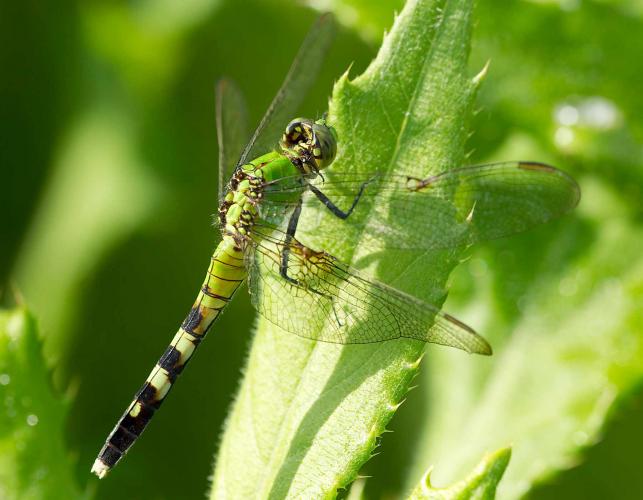Media

Scientific Name
Erythemis simplicicollis
Family
Libellulidae (skimmers) in the order Odonata (dragonflies and damselflies)
Description
The eastern pondhawk is a common and well-known large dragonfly of ponds and other standing water. It is in the large family of dragonflies called skimmers. Females and young males are green with squarish black abdomen spots. Older males have a blue abdomen and green face and thorax. This species is one of the first to be seen in spring and last to be seen in fall. Ponds or other standing water is the preferred habitat. Sparring males engage in fascinating aerial maneuvers.
Learn more about the eastern pondhawk and other dragonflies (suborder Anisoptera) in their group entry.
Other Common Names
Green Jacket
Common Pondhawk
Title
Media Gallery
Image

Caption
The eastern pondhawk, Erythemis simplicicollis, is in the large family of dragonflies called skimmers. Females and young males are green with black abdomen spots. The ovipositor (egg-laying organ) on this female is visible below the tip of her abdomen.
Credit
Donna Brunet
Right to Use
Image

Caption
The eastern pondhawk, Erythemis simplicicollis, is in the large family of dragonflies called skimmers. Older males have a blue abdomen and green face. Sparring males engage in fascinating aerial maneuvers.
Credit
Donna Brunet
Right to Use
Image

Caption
In old-time Ozark dialect, large dragonflies such as the eastern pondhawk were called "katynippers" and "snake feeders."
Credit
Noppadol Paothong
Right to Use
Image
Credit
Submitted by Chadrick Parson
Right to Use
Image

Image

Image

Image
Title
Similar Species
About Land Invertebrates in Missouri
Invertebrates are animals without backbones, including earthworms, slugs, snails, and arthropods. Arthropods—invertebrates with “jointed legs” — are a group of invertebrates that includes crayfish, shrimp, millipedes, centipedes, mites, spiders, and insects. There may be as many as 10 million species of insects alive on earth today, and they probably constitute more than 90 percent all animal species.
























